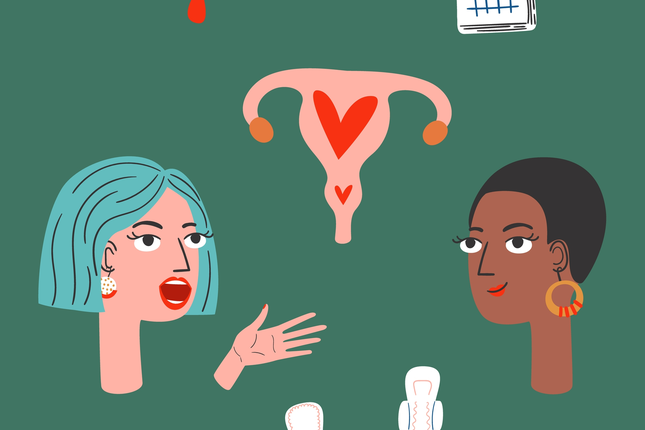-
Silencing the Stigma of Menstruation
May 18, 2022 By Chanel Lee
Every month, young women and girls in the villages of Nepal make their way into makeshift huts where they will reside for the week until their menstruation has finished. Some of them will turn to nearby sheds whereas others will travel through dense forests to reach these huts. Venomous snake bites, asphyxiation, and rape are just a few of the harsh realities of living in these poorly ventilated and weakly protected menstrual huts. This practice of self-isolation called “chhaupadi” is an ancient tradition of “untouchability” rooted in the belief that menstruation is sinful and impure. Considered bringers of misfortune, menstruating girls and women are forbidden from taking part in any household, religious, and social activities under this tradition, forcing them to distance themselves from their family and community during this time. Although chhaupadi seems like an extreme case or isolated custom, it actually represents a common global issue—menstrual stigma.
The Global and U.S. Impact of Menstrual Stigma
Countries around the world stigmatize menstruation. Throughout South Asia, sub-Saharan Africa, Oceania and many other regions, menstruators experience restrictions during menstruation. Menstrual restrictions include preventing menstruators from entering places of worship, touching family members, exercising, and playing. In religious contexts especially, menstruating women and girls are considered “ritually impure” and therefore prohibited from praying, fasting, or touching holy texts. Menstrual stigma is a major driver of poor menstrual hygiene, which has been associated with reproductive infections. Poor menstrual hygiene management is worsened by a lack of clean sanitary products, adequate sanitation facilities, and knowledge about menstruation.
The effects of menstrual stigma are greatest on school-aged youth, who frequently report menstruation-related teasing, shaming, and punishment from their male peers and teachers. The inability to manage one’s menstruation safely and properly in the school environment has led many girls to stay home during their periods. In India, each year, 23 million girls drop out of school once they start menstruating. In this way, stigma contributes to poor school attendance and academic performance among youth, which negatively affects their future educational and economic opportunities.
Menstrual stigma does not always involve being banished away to a shed in the wilderness or being left out of social and religious gatherings. It can persist in subtle and silent forms. It is the sliding of a tampon into your sleeve while no one’s watching, the discreet-but-not-discreet shoving of a pad into your back pocket as its plastic packaging crackles and crinkles under the weight of your hurried fingers, or more brazenly, the smuggling of a small wallet encased with a pad and the instant mortification you feel as your teacher asks you in front of the whole class why you need to bring your purse with you into the restroom. This is what menstrual stigma looks like even in a “developed” and “progressive” country like the United States. Negative societal attitudes and beliefs toward menstruation have driven and conditioned menstruators into believing that menstruation is dirty, disgusting, and something worth concealing.
Data supports the profound impact of menstrual stigma on youth. A 2019 study found that nearly two-thirds of U.S. teens aged 13 to 19 years believe that society teaches people to be ashamed of their periods. And 80 percent of teens feel that there is a negative association with periods—that they are gross or unsanitary. Internalizing these harmful messages around menstruation in adolescence can have detrimental consequences on one’s self-esteem and self-image into later adulthood. This is particularly concerning given that young people are already experiencing incredible changes in their bodies and identities. It raises the question then—how can menstruators normalize what society constantly deems icky and shameful?

Addressing Gender Norms to Combat Menstrual Stigma
Part of fighting the battle that is menstrual stigma is simply talking about menstruation exactly for what it is—a natural biological function. Young people should be taught that menstruation is a sign of a healthy body and that they should not be embarrassed by it. It also involves degendering menstruation, as people of all genders—including trans and nonbinary people—menstruate. When we use gendered language to frame menstruation as strictly a women’s issue, we reinforce the idea that menstruation is tied to gendered norms and values (e.g., femininity, womanhood) and in turn, risk alienating non-cisgender menstruators and increasing the stigma that they face as menstruating people. In addition, non-menstruating people should not be excluded from, but rather actively involved in, the conversation around menstruation. Educating and engaging non-menstruators to understand that menstruation is not something to be ashamed of can further reduce stigma and empower menstruating people.
Menstruation needs to be a part of regular everyday conversations, both in real life and in the media. Pixar’s newest animated film Turning Red grapples with the shame and stigma commonly associated with menstruation, especially for first-time menstruators. The film openly and positively discusses puberty and periods, which child psychologists and sex education teachers have said is helping to normalize the language we use around menstruation. However, the disapproval from some parents over the film’s inclusion of such topics suggests that having open and honest dialogue around menstruation is valuable not just for children, but also their parents.
Increasing Access to Period Products to Beat Menstrual Stigma
Another key component to destigmatizing menstruation is ensuring that all people who menstruate have access to safe, clean, and affordable hygiene products. This involves making products available in schools, shelters, prisons, and in any place where someone would need them. In the United States, difficulties in accessing menstrual products fall harder on younger, lower-income, and unhoused people. A 2019 study found that 1 in 5 U.S. teens have missed school because of a lack of period products. A 2018 study in St. Louis found that 64 percent of low-income women (some of whom were experiencing homelessness) reported being unable to afford menstrual hygiene supplies during the previous year, and 21 percent faced this issue every month. Breaking the stigma of menstruation also entails dismantling the tampon tax, a sales tax imposed on “feminine” hygiene products for being considered luxury products rather than medical necessities. This tax represents a structural barrier that reinforces gender inequality, and it is still in effect in 30 states. In February 2022, Michigan became the latest state to repeal the tax.
Abolishing the tampon tax is also possible on a national scale. Scotland, the United Kingdom, and Namibia are some of the most recent countries to eliminate the tax, with a number of additional countries and cities providing free menstrual products in schools, supermarkets, and community spaces. These country-level efforts are helping to normalize menstruation, and their victories are not by chance. They are evidence of a global movement for menstrual equity that is growing, succeeding, and guiding the future.
A world free from menstrual stigma is not far from reality. At the same time, menstrual stigma is just one thread interwoven into the fabric of reproductive injustice, gender-based oppression, and patriarchal systems. As we work to end the tampon tax and provide free menstrual products for all, we must also strive to transform and dismantle the structures and systemic conditions that allow for menstrual stigma to happen in the first place. Tackling the issue of menstrual stigma is only part of a larger fight against gender inequality. Silencing the stigma of menstruation requires the full participation of everyone. As the United Nations Population Fund said it best, “menstruation is not a girls’ or women’s issue—it’s a human rights issue.”
Sources: BBC, BMC Infectious Diseases, BMC International Health and Human Rights, BMJ Open, Business Wire, Buzzfeed News, CNN, Global Citizen, Global Health Promotion, Independent, Michigan.gov, National Geographic, NPR, The Guardian, The New York Times, The Palgrave Handbook of Critical Menstruation Studies, The Washington Post, Obstetrics and Gynecology, PLoS One, Reproductive Health, Reuters, Sexual and Reproductive Health Matters, Swachh India, Teen Vogue, Thinx, UNFPA, UNICEF, USA Today, Women’s Reproductive Health (Philadelphia, PA.).
Photo Credit: Group of multiethnic college friends walking in the street. Jacob Lund/Shutterstock.com; Women’s health during period conceptual vector illustration. Nataliya Dolotko/Shutterstock.com.
 A Publication of the Stimson Center.
A Publication of the Stimson Center.




